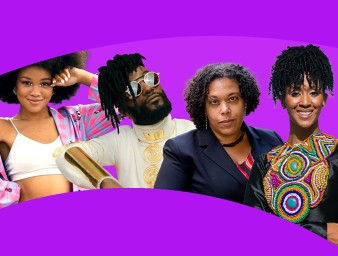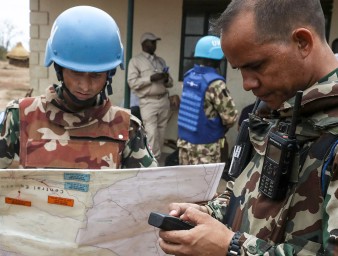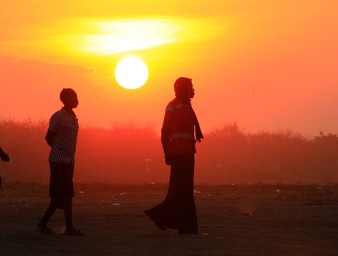A war victim’s search for peace, reconciliation in Colombia
26 July 2023
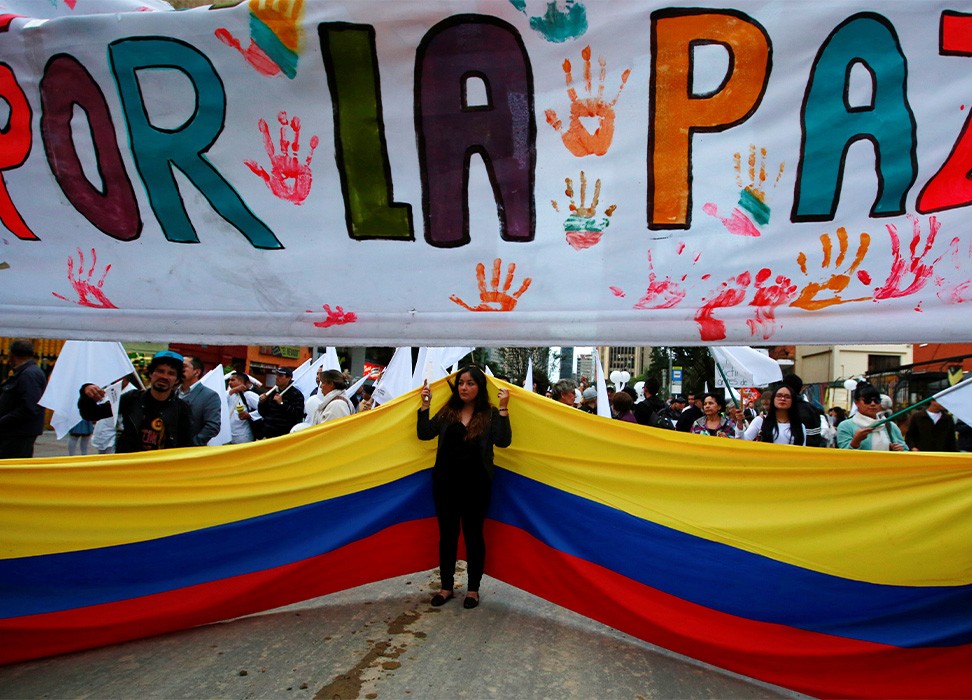
Leyner Palacios’ life was split in two one early morning of May 2, 2002.
As fighting raged between rival armed groups in the hamlet of Bojayá, in Colombia’s Pacific jungle, terrified residents had sought refuge in the local church. Most were old men, children and women -- some of them pregnant.
“The bullets were coming from all directions, and we had to hide under the mattresses in our homes. At 10 a.m. we heard a loud explosion, and when we looked up we saw that the roof of the church was gone,” Palacios recalled.
“I can still see all those dead people among the ruins of the church. It’s a memory that brings a lot of pain and anger,” Palacios said, recounting how he fled and crossed the river while carrying his 2-year-old daughter.
At least 81 people, including 46 children, died after a cylinder bomb fired by the Revolutionary Armed Forces of Colombia (FARC) rebel group fell on the church in what became known as the Bojayá massacre, one of the worst killings of civilians in Colombia’s decades-old war.
However, Palacios, a local leader from the Afro-Colombian community, did not let those memories take over his life. Despite losing relatives and friends in Bojayá, Palacios played a prominent role in the peace negotiations that led to the historic 2016 peace agreement between FARC rebels and the government, and went on to become a member of the country’s Truth Commission.
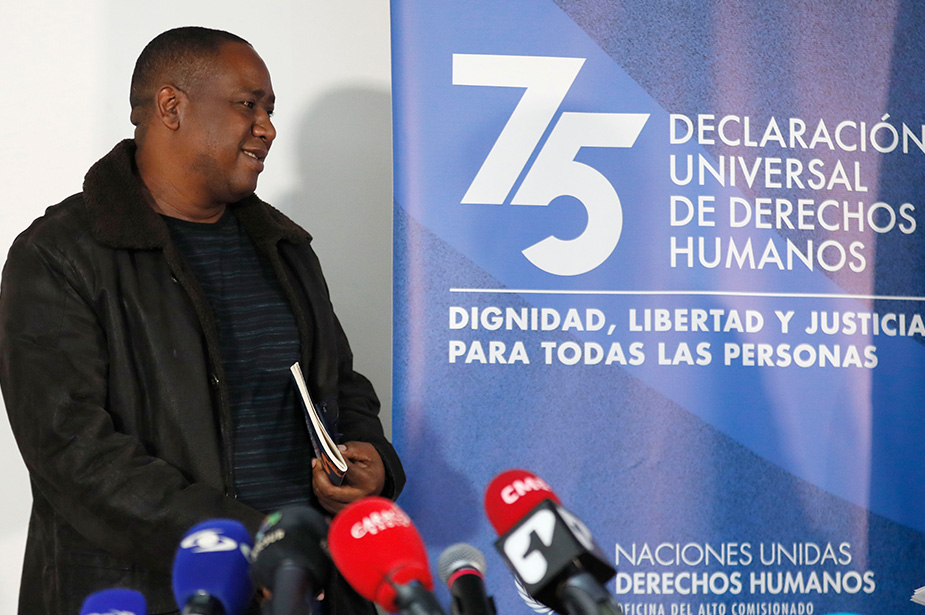
Former Truth Commissioner and community leader Leyner Palacios © EPA-EFE/Carlos Ortega
“I saw the peace process as an opportunity to improve the human rights situation of my community and of my country and contribute to the silencing of the guns,” he said. “When you have lived through conflict and you have suffered discrimination and poverty like I did you do anything to end it.”
Right to truth and justice
A central pillar of Colombia’s peace agreement between the government and FARC rebels has been an ambitious effort to address the victims’ rights to truth, justice and reparations, as well as guarantees of non-repetition through a comprehensive process of transitional justice.
UN Human Rights, which has been present in Colombia since 1997 serving as a bridge among all actors and advancing the rights of victims, has supported efforts to integrate international human rights norms and standards in the peace agreement.
The Office also supports efforts to promote justice for grave human rights violations and breaches of international humanitarian law by strengthening the capacities of transitional justice mechanisms, including the Special Jurisdiction for Peace tribunal and the Search Unit for Disappeared People.
“The participation of victims in the peace process and in transitional justice has been something unprecedented in Colombia and in the world,” said Juliette de Rivero, representative of UN Human Rights in Colombia, adding the Colombian peace process could be a model to end other conflicts.
“The Truth Commission has played an exceptional role not only in restoring the voice of the victims, but also in turning them into builders of peace and transformers of the country,” she said.
Earlier this month, the Human Rights Council adopted a resolution to strengthen the Office’s role in providing technical assistance and capacity-building to assist Colombia with the implementation of the recommendations made by the Truth Commission.
“
The commitment announced by the Government to implement the recommendations of the Truth Commission is hugely important to tackle the root causes of violence and conflict, and as part of the healing process.
“
UN Human Rights Chief Volker Türk
The 11-member Truth Commission spent four years holding public hearings across the country to collect testimony from victims and perpetrators and expose the truth behind rights abuses, including massacres, kidnappings, displacement, and gender and sexual-based violence.
For Francisco de Roux, a Jesuit priest who headed the Truth Commission, learning the truth from all victims is the first step to heal the wounds of conflict.
“If we want to rescue ourselves as human beings, we have to be able to face our history and talk about the human tragedy of war,” De Roux said.
Life by the river
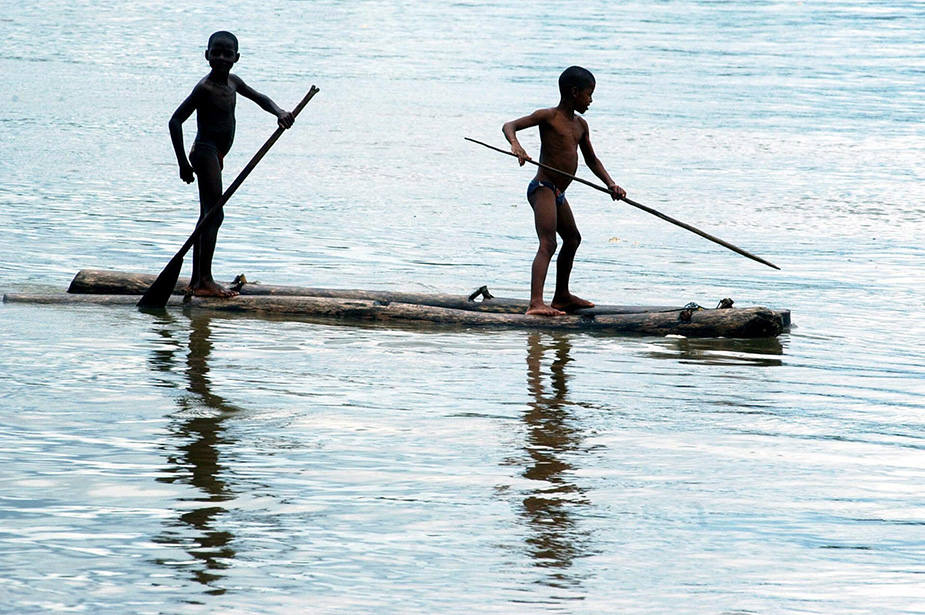
Colombian children fish near Bojayá. Palacios said life by the river taught him the value of dialogue and listening to others. © EPA/Rafa Salafranca
Palacios, 47, grew up as one of the 24 children of a small farmer and local inspector who made his living trading with communities along the Atrato river in Chocó region. The family picked cacao beans, cut wood and caught fish.
“Life by the river taught us the value of dialogue,” Palacios said. “We learned how to navigate through the different communities and listen to them. We would talk with the indigenous and Afro-Colombian populations, we would negotiate with the guerrillas, the army, the paramilitaries. That’s how I gained an experience which was going to be useful for my adult life.”
When FARC rebels and the government began peace talks in Havana in 2012, Palacios was one of dozens of war victims to travel to Cuba to give testimony.
His abilities to empathize and listen to all sides were instrumental in obtaining an unprecedented public apology from the FARC, one of the conditions of the peace agreement. Nearly 20 years after the massacre in Bojayá, a special ceremony was held on the stairs of the burned-out church; the coffins of those who died – including dozens of white coffins containing the remains of children - travelled down the river by boat amid prayers and songs for a final burial.
As a member of the Truth Commission, Palacios estimates he heard more than 800 testimonies, from mothers to landowners to police officers to businessmen to rival gunmen.
“I learned that my pain was not different from that of so many other Colombians,” he said.
Reconciliation
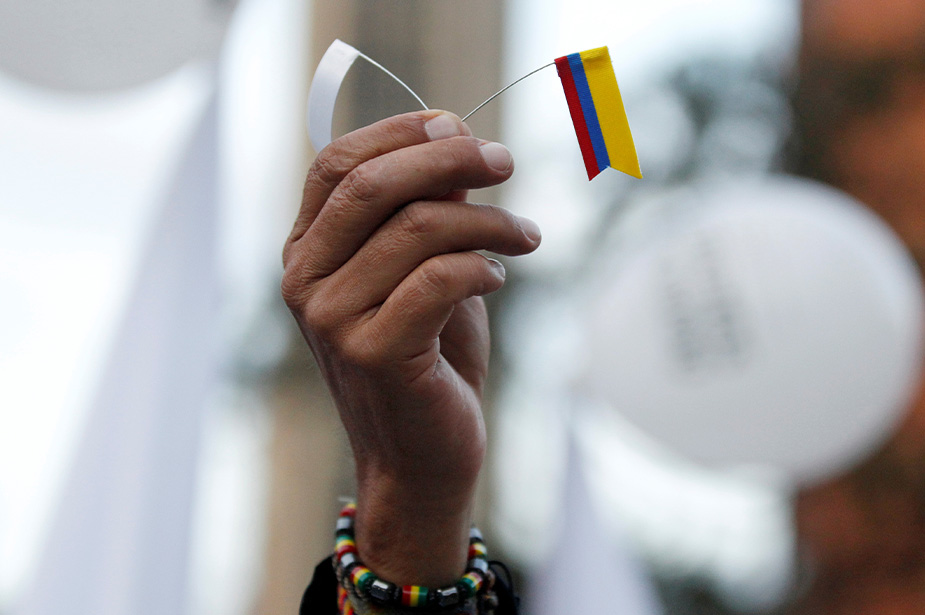
A supporter for the peace agreement with FARC holds a tiny flag during a march in Bogota, Colombia. © REUTERS/John Vizcaino
The agreement with the FARC is extraordinarily complex and covers everything from the reintegration of former combatants to rural development, reform of the security sector, land rights, drug policy and gender and women’s empowerment, laying out a roadmap for a future built on peace and inclusion, De Rivero said.
But Colombia’s path away from decades of conflict and its legacy will be long and arduous, experts warn. Despite the peace agreement, the country faces violence against peasant leaders, land claimants, environmentalists, and demobilized guerrillas. In 2022 alone, the Office verified 83 cases of massacres and 112 killings of human rights defenders.
Palacios himself has received death threats and is now in hiding under protection of the State. He has continued to speak out for victims, denouncing violence and extortion by armed groups, corruption and lack of rural development. There is still no doctor in Bojayá, he said.
Yet, he remains optimistic about the future, if only because there is no choice.
“Colombia’s conflict has torn the souls of Colombians apart for almost 70 years. The only road we have left is reconciliation. We will never end this conflict with more violence.”
